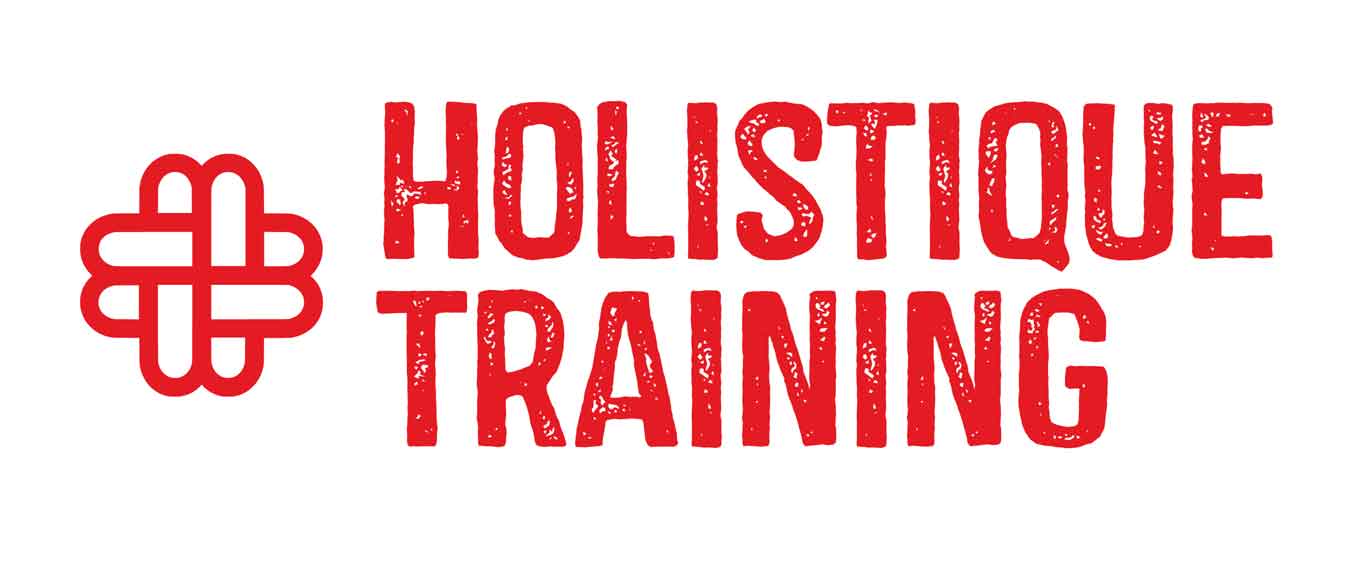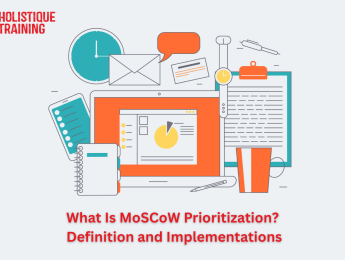- Table of Contents
- Introduction
- What is MoSCoW Prioritization?
- Origins of the MoSCoW Framework
- How Does MoSCoW Prioritization Work in Agile?
- Comparison Table: MoSCoW Prioritization vs. RICE Scoring
- How to Do a MoSCoW Prioritization
- 1. Define the Scope
- 2. Identify Requirements
- 3. Categorize Requirements
- 4. Engage Stakeholders
- 5. Review and Adjust
- 6. Communicate Clearly
- Best Practices in Using MoSCoW Prioritization
- 1. Limit Must-Haves
- 2. Involve Stakeholders Early
- 3. Focus on Value
- 4. Be Flexible
- 5. Avoid Ambiguity
- 6. Use Visuals
- Why Is MoSCoW Prioritization Important?
- 1. Prevents Scope Creep
- 2. Enhances Collaboration
- 3. Improves Time Management
- 4. Supports Flexibility
- 5. Promotes Transparency
- Criticism of the MoSCoW Framework
- 1. Subjectivity in Categorization
- 2. Overloading the Must-Have Category
- 3. Lack of Quantitative Metrics
- 4. Difficulty in Handling Dependencies
- 5. Static Nature of Categories
- 6. Limited Scalability for Large or Complex Projects
- Take the Next Step in Your Project Management Journey
- Conclusion
Introduction
When it comes to project management, prioritization is the cornerstone of success. Whether you're developing a new product, managing a team, or delivering value to stakeholders, deciding what to focus on—and when—can make or break your efforts. This blog post delves into one of the most popular prioritization techniques used in Agile environments: the MoSCoW prioritization framework. We'll explore what it is, its origins, how it works, and why it remains a vital tool for project managers and teams. Along the way, we'll also uncover best practices, address criticisms, and provide actionable insights to help you implement the framework effectively.
What is MoSCoW Prioritization?
The MoSCoW prioritization framework is a structured method for ranking tasks, features, or requirements based on their importance. The name "MoSCoW" isn't related to the Russian capital—it’s an acronym that represents four priority categories:
- Must-Have: These are non-negotiable requirements. Without them, the project is considered a failure. Must-Haves are the core functionalities or tasks that ensure the project’s viability. For example, in an e-commerce website, the ability to process payments securely would be a Must-Have.
- Should-Have: These are important but not critical. They add significant value to the project but are not essential for its basic operation. Should-Haves are often the next priority after Must-Haves, and their inclusion depends on available time and resources.
- Could-Have: These are desirable but not necessary. Could-Haves are often seen as enhancements or "nice-to-have" features. They can be deprioritized or even omitted without affecting the overall success of the project.
- Won’t-Have (for now): These are low-priority items that will not be included in the current scope. They might be revisited in future iterations or releases but are deliberately excluded from the current plan to maintain focus.
The MoSCoW framework provides clarity and helps teams avoid the common trap of trying to do everything at once. By categorizing tasks into these four groups, you can make informed decisions about what truly matters.
Origins of the MoSCoW Framework
The MoSCoW method was introduced by Dai Clegg in 1994 while working at Oracle. It was developed as part of the Dynamic Systems Development Method (DSDM), one of the early Agile frameworks. Clegg's goal was to create a simple yet effective way to prioritize requirements in software development projects.
At the time, traditional project management approaches often struggled with scope creep and unclear priorities. The MoSCoW framework addressed these challenges by providing a structured way to identify and agree on what was essential versus optional. Over time, the framework gained popularity outside of DSDM and became a staple in Agile methodologies like Scrum and Kanban.
Although it was initially designed for software development, MoSCoW has since been adopted across various industries, from marketing to product development, thanks to its universal applicability.
How Does MoSCoW Prioritization Work in Agile?
In Agile environments, where iterative development and flexibility are key, MoSCoW prioritization fits seamlessly. Agile teams often work in short cycles (sprints) and need to deliver value quickly. MoSCoW helps them focus on what’s most important within each sprint.
Here’s how it typically works in Agile:
- Backlog Grooming: During backlog refinement, teams use MoSCoW to categorize user stories, tasks, or features. This ensures that only the most critical items are included in the upcoming sprint.
- Stakeholder Alignment: MoSCoW facilitates discussions with stakeholders to agree on priorities. By involving stakeholders in the prioritization process, teams can manage expectations and avoid misunderstandings.
- Time-Boxed Delivery: Agile projects often operate within strict time constraints. MoSCoW ensures that Must-Have items are completed first, followed by Should-Haves and Could-Haves if time allows.
- Iteration Planning: In each sprint, the team focuses on delivering the Must-Have items. If time permits, they move on to Should-Haves and Could-Haves, ensuring that every iteration delivers meaningful value.
By integrating MoSCoW into Agile practices, teams can maintain focus, manage scope, and deliver high-quality outputs without overcommitting.
Comparison Table: MoSCoW Prioritization vs. RICE Scoring
How to Do a MoSCoW Prioritization
Implementing MoSCoW prioritization involves several key steps:
1. Define the Scope
Before diving into prioritization, it’s crucial to understand the big picture. What is the project trying to achieve? What are the key deliverables, objectives, and constraints? Defining the scope sets the foundation for everything that follows.
Start by asking questions like:
- What is the purpose of this project?
- Who are the stakeholders, and what do they expect?
- Are there any fixed deadlines or budget limitations?
Defining the scope ensures that everyone involved has a shared understanding of the project’s overall direction. This clarity helps prevent misaligned priorities later on. For instance, if the goal is to launch a minimum viable product (MVP), the scope will naturally emphasize Must-Have features over Could-Haves.
2. Identify Requirements
Once the scope is clear, the next step is to gather all potential requirements, tasks, or features that could be part of the project. This step is essentially a brainstorming phase where you aim to capture everything that might be needed.
You can gather requirements through:
- Stakeholder Interviews: Speak to stakeholders to understand their needs and expectations.
- User Research: Analyze user feedback, surveys, or behavioral data to identify pain points and opportunities.
- Team Workshops: Collaborate with your team to brainstorm ideas and identify potential tasks or features.
At this stage, don’t worry about prioritizing or filtering out ideas. The goal is to create a comprehensive list that includes everything from essential features to pie-in-the-sky ideas. This raw list will serve as the input for the prioritization process.
3. Categorize Requirements
This is the heart of the MoSCoW framework: assigning each requirement to one of the four categories—Must-Have, Should-Have, Could-Have, or Won’t-Have.
- Must-Have: Ask yourself, “What will make the project fail if it’s missing?” These are the non-negotiable requirements. For example, in a mobile banking app, secure login functionality would be a Must-Have.
- Should-Have: These are important but not critical. They add significant value but can be deferred if necessary. For instance, in the same banking app, a feature for setting up recurring payments might be a Should-Have.
- Could-Have: These are the “nice-to-haves.” They’re desirable but not essential. If time and resources allow, they can be included, but their absence won’t compromise the project’s success.
- Won’t-Have (for now): These are explicitly excluded from the current scope. They might be revisited in future iterations, but for now, they’re off the table.
Categorizing requirements can be challenging, especially when stakeholders have differing opinions. Facilitate discussions to ensure everyone understands the criteria for each category. It’s also helpful to remind stakeholders that prioritization is about trade-offs—everything can’t be a Must-Have.
4. Engage Stakeholders
Prioritization isn’t something that should happen in isolation. Engaging stakeholders is a critical step in the MoSCoW process. Stakeholders—whether they’re clients, end-users, or internal team members—bring valuable perspectives that can shape priorities.
Here’s how to involve stakeholders effectively:
- Facilitate Workshops: Organize prioritization workshops where stakeholders can discuss and debate the importance of various requirements. Use the MoSCoW categories as a framework for these discussions.
- Manage Expectations: Clearly communicate the constraints (e.g., time, budget, resources) and emphasize that not everything can be a Must-Have.
- Seek Consensus: Aim for alignment rather than unanimous agreement. Not everyone will agree on every detail, but it’s important to reach a consensus on the overall priorities.
Engaging stakeholders early and often ensures that the final prioritization reflects a balanced perspective and reduces the risk of conflicts later in the project.
5. Review and Adjust
Prioritization isn’t a one-and-done activity. As the project progresses, new information may come to light, or circumstances may change. For example, a regulatory update might turn a Could-Have feature into a Must-Have, or a technical challenge might make a Should-Have feature unfeasible within the current timeline.
To keep your priorities aligned with reality:
- Schedule Regular Reviews: Set aside time during sprint planning or milestone check-ins to revisit the MoSCoW categories.
- Be Open to Change: Recognize that priorities are dynamic and may need to shift as the project evolves.
- Document Changes: Keep a record of why certain items were reclassified. This transparency helps maintain trust among stakeholders and avoids misunderstandings.
By treating prioritization as an ongoing process, you can adapt to changes without losing sight of your project’s core objectives.
6. Communicate Clearly
The final step is to ensure that everyone involved understands the prioritization decisions and their rationale. Clear communication is essential for maintaining alignment and avoiding confusion.
Here’s how to communicate effectively:
- Create Visual Aids: Use tools like Kanban boards, Gantt charts, or simple spreadsheets to visually represent the MoSCoW categories.
- Provide Context: Explain why certain items were classified as Must-Have versus Should-Have. For example, you might say, “This feature is a Must-Have because it addresses a critical user need.”
- Set Expectations: Be transparent about what Won’t-Have items mean. Make it clear that these items are not being abandoned forever—they’re simply not part of the current scope.
Effective communication ensures that everyone—team members, stakeholders, and even end-users—understands the project’s priorities and supports the decisions made.
By following these six steps, you can implement MoSCoW prioritization in a way that is collaborative, transparent, and aligned with your project’s goals. Each step builds on the previous one, creating a structured process that helps teams focus on what truly matters while remaining flexible enough to adapt to changing circumstances.
Table: Metrics to measure the effectiveness of MoSCoW Prioritization
Best Practices in Using MoSCoW Prioritization
The MoSCoW prioritization framework is a powerful tool for organizing and managing requirements, but its effectiveness depends on how it’s implemented. While the framework itself is simple, applying it in real-world projects can be challenging without the right approach. Below, we’ll dive deeper into the best practices that can help you maximize the value of MoSCoW prioritization.
1. Limit Must-Haves
One of the most common pitfalls in MoSCoW prioritization is overloading the Must-Have category. When everything is labeled as critical, the framework loses its purpose, and prioritization becomes meaningless.
To avoid this, be ruthless in your evaluation of what qualifies as a Must-Have. Ask questions like:
- “Will the project fail without this?”
- “Is this absolutely essential for meeting the project’s core objectives?”
- “Does this feature or task directly impact the user’s ability to achieve their primary goal?”
A good rule of thumb is to keep Must-Haves limited to around 60% of the total workload or less. This ensures that your team has enough capacity to address Should-Haves and Could-Haves if time permits. It also creates a buffer for unexpected challenges or changes in scope.
By keeping the Must-Have list lean, you ensure that your team focuses on delivering the most critical outcomes without becoming overwhelmed.
2. Involve Stakeholders Early
Stakeholders play a crucial role in determining priorities, so it’s essential to involve them from the very beginning. Their input ensures that the prioritization reflects the needs and expectations of those who will be impacted by the project.
Here’s how to engage stakeholders effectively:
- Facilitate Discussions: Use workshops or meetings to openly discuss priorities with stakeholders. Encourage them to share their perspectives and explain why certain requirements are important to them.
- Educate on MoSCoW: Not all stakeholders will be familiar with the MoSCoW framework. Take the time to explain how it works, what each category means, and why prioritization is necessary.
- Balance Perspectives: Different stakeholders may have competing priorities. For example, a marketing team might prioritize features that drive user engagement, while a technical team might focus on backend stability. Facilitate discussions to find a balance that aligns with the project’s overarching goals.
Early involvement not only helps build stakeholder buy-in but also reduces the risk of conflicts or misaligned expectations later in the project.
3. Focus on Value
The ultimate goal of MoSCoW prioritization is to deliver value—whether that’s value to users, stakeholders, or the organization as a whole. To ensure that your priorities align with this goal, evaluate each requirement through the lens of value.
Consider these questions when assessing value:
- “How does this requirement contribute to the project’s objectives?”
- “What is the impact of including (or excluding) this feature on the end-user experience?”
- “Does this task provide a competitive advantage or address a critical pain point?”
Using data to inform your decisions can also be incredibly helpful. For example, customer feedback, analytics, or market research can provide insights into which features or tasks will have the greatest impact.
Focusing on value ensures that your team spends its time and resources on what matters most, rather than getting sidetracked by less impactful tasks.
4. Be Flexible
Projects are rarely static. New information, changing circumstances, or unexpected challenges can all impact priorities. That’s why flexibility is a key component of successful MoSCoW prioritization.
Here’s how to stay adaptable:
- Regularly Reassess Priorities: Schedule periodic reviews of your MoSCoW categories to ensure they still align with the project’s goals and constraints.
- Be Open to Change: Recognize that priorities may shift as the project evolves. For example, a new competitor might release a feature that suddenly makes one of your Could-Haves a Must-Have.
- Communicate Changes: If priorities change, make sure to communicate the reasons behind these changes to your team and stakeholders. Transparency helps maintain trust and alignment.
Flexibility allows you to respond to new challenges and opportunities without losing sight of your project’s overall objectives.
5. Avoid Ambiguity
Ambiguity can undermine the effectiveness of MoSCoW prioritization. If the criteria for each category aren’t clear, it can lead to confusion, miscommunication, and disagreements among team members and stakeholders.
To avoid ambiguity:
- Define Categories Clearly: Establish clear definitions for what constitutes a Must-Have, Should-Have, Could-Have, and Won’t-Have. For example, you might define a Must-Have as something that directly impacts the project’s success, while a Could-Have is something that enhances the experience but isn’t essential.
- Document Decisions: Whenever you assign a requirement to a category, document the reasoning behind the decision. This creates a record that can be referenced if questions or disputes arise later.
- Use Examples: Provide examples of past requirements that fit into each category. This can help stakeholders and team members understand how to classify new requirements.
Clarity ensures that everyone involved in the project is on the same page, reducing the risk of misunderstandings or misaligned expectations.
6. Use Visuals
Visual tools can make MoSCoW prioritization more accessible and easier to understand. They provide a clear, at-a-glance view of priorities, which can be especially helpful when communicating with stakeholders or managing large, complex projects.
Here are some ways to incorporate visuals:
- Kanban Boards: Use a Kanban board to organize tasks by their MoSCoW categories. For example, you could create columns for Must-Have, Should-Have, Could-Have, and Won’t-Have, and move tasks between them as priorities evolve.
- Priority Grids: Create a grid or chart that visually represents the priority of each requirement. For example, a two-axis chart could show importance versus urgency, with MoSCoW categories mapped accordingly.
- Color Coding: Use color coding to differentiate between categories. For instance, you might use red for Must-Haves, yellow for Should-Haves, green for Could-Haves, and gray for Won’t-Haves.
Visuals not only make it easier to communicate priorities but also help teams stay organized and focused on what matters most.
By following these best practices, you can ensure that MoSCoW prioritization is implemented effectively and delivers the intended benefits. Whether you’re managing a small project or a large, complex initiative, these strategies will help you navigate the challenges of prioritization with clarity, focus, and confidence.
Why Is MoSCoW Prioritization Important?
The MoSCoW prioritization framework is more than just a method for organizing tasks—it’s a strategic tool that helps teams and organizations focus on what truly matters. By breaking down requirements into clear categories, MoSCoW enables better decision-making, enhances collaboration, and ensures that resources are allocated effectively. Let’s explore the key reasons why MoSCoW prioritization is so important, elaborating on each benefit.
1. Prevents Scope Creep
Scope creep is one of the most common challenges inproject management. It occurs when additional features, tasks, or requirements are added to a project without proper evaluation, often overwhelming teams and derailing timelines. MoSCoW prioritization acts as a safeguard against scope creep by clearly defining what is in scope (Must-Haves, Should-Haves, Could-Haves) and what is explicitly out of scope (Won’t-Haves).
When a new request or requirement arises mid-project, the MoSCoW framework provides a structured way to evaluate its importance. Teams can ask:
- Does this align with the project’s objectives?
- Is this more critical than existing Must-Haves?
- Can this wait until a future iteration?
By forcing these discussions, MoSCoW ensures that only the most essential tasks are added to the project, keeping scope under control. This clarity helps teams stay focused on delivering the core objectives without getting bogged down by unnecessary additions.
2. Enhances Collaboration
Projects often involve multiple stakeholders, each with their own priorities, goals, and perspectives. Without a structured approach, these differing viewpoints can lead to conflicts or misaligned expectations. MoSCoW prioritization fosters collaboration by providing a common framework for discussing and agreeing on priorities.
For example:
- Stakeholders: MoSCoW encourages open dialogue between stakeholders, helping them articulate their needs and understand the trade-offs involved in prioritization.
- Teams: It creates a shared understanding among team members about what needs to be done first and why, reducing confusion and improving alignment.
- Cross-Functional Groups: For projects involving multiple departments (e.g., marketing, engineering, design), MoSCoW serves as a unifying language that bridges gaps between different functions.
This collaborative process not only improves decision-making but also builds trust and alignment among all parties involved. When everyone has a voice in the prioritization process, they’re more likely to support the final decisions.
3. Improves Time Management
Time is one of the most valuable resources in any project, and MoSCoW prioritization helps teams use it wisely. By focusing first on Must-Have tasks, teams ensure that the most critical work is completed within the available time frame.
Here’s how MoSCoW enhances time management:
- Clear Focus: Teams know exactly what to work on first, eliminating wasted time spent debating priorities or switching between tasks.
- Efficient Sprints: In Agile environments, MoSCoW ensures that each sprint delivers meaningful value by prioritizing Must-Haves and Should-Haves.
- Adaptability: If time runs out, teams can confidently drop Could-Haves or Won’t-Haves without compromising the project’s success.
This structured approach to time management ensures that deadlines are met without sacrificing quality or essential functionality.
4. Supports Flexibility
One of the biggest advantages of MoSCoW prioritization is its adaptability. Projects are rarely static—requirements change, new challenges arise, and priorities shift. MoSCoW provides a flexible framework that allows teams to respond to these changes without losing sight of their core objectives.
For example:
- If a new regulatory requirement arises mid-project, teams can reclassify it as a Must-Have and adjust other priorities accordingly.
- If a technical roadblock delays the implementation of a Should-Have feature, teams can shift their focus to other tasks without derailing the entire project.
- If additional time becomes available, teams can revisit Could-Haves and include them in the current scope.
This flexibility is especially valuable in Agile environments, where iterative development and changing requirements are the norm. MoSCoW ensures that teams can adapt to new circumstances while maintaining a clear sense of direction.
5. Promotes Transparency
Transparency is critical for building trust and maintaining alignment in any project. MoSCoW prioritization promotes transparency by making priorities explicit and providing a clear rationale for each decision.
Here’s how it works:
- Clear Documentation: MoSCoW categories are documented and shared with all stakeholders, ensuring that everyone understands what’s being prioritized and why.
- Open Communication: The framework encourages open discussions about trade-offs, helping stakeholders understand the constraints and limitations of the project.
- Accountability: When priorities are clearly defined, it’s easier to hold teams and stakeholders accountable for delivering on their commitments.
This level of transparency reduces misunderstandings, minimizes conflicts, and ensures that everyone is on the same page throughout the project lifecycle.
In summary, MoSCoW prioritization is important because it provides a structured way to manage scope, build collaboration, optimize time, adapt to change, and maintain transparency. By addressing these critical aspects of project management, the framework helps teams and organizations deliver successful outcomes in a focused and efficient manner.
Criticism of the MoSCoW Framework
While the MoSCoW prioritization framework is widely used and appreciated for its simplicity and effectiveness, it is not without its limitations. Like any methodology, it has its share of criticisms, particularly when applied in complex or fast-paced projects. Below, we’ll discuss the key criticisms to provide a more comprehensive understanding of the potential challenges associated with using MoSCoW.
1. Subjectivity in Categorization
One of the most common criticisms of the MoSCoW framework is the inherent subjectivity involved in categorizing requirements. Deciding whether a task is a Must-Have, Should-Have, Could-Have, or Won’t-Have often depends on individual perspectives, which can vary significantly among stakeholders.
For example:
- A marketing stakeholder might view a feature that enhances user engagement as a Must-Have, while a developer might see it as a Could-Have since it doesn’t directly impact the core functionality.
- Similarly, a stakeholder’s personal biases or priorities may influence their judgment, leading to disagreements or misaligned expectations.
This subjectivity can lead to lengthy debates and conflicts, particularly in projects with diverse teams or competing interests. Without clear criteria or strong facilitation, it can be challenging to reach a consensus on how to classify requirements.
2. Overloading the Must-Have Category
Another common issue with MoSCoW prioritization is the tendency to overload the Must-Have category. Stakeholders often feel that their needs are critical to the project’s success and may push for their requirements to be classified as Must-Haves.
This behavior can result in several problems:
- Dilution of Prioritization: If too many requirements are labeled as Must-Haves, it undermines the purpose of prioritization, as everything is treated as equally critical.
- Resource Strain: Overloading Must-Haves can stretch the team’s resources too thin, leading to burnout or delays.
- Missed Opportunities: By focusing too heavily on Must-Haves, teams may neglect Should-Haves or Could-Haves that could add significant value to the project.
To avoid this issue, facilitators must set strict limits on the number of Must-Haves and enforce clear criteria for what qualifies as essential. However, this can be difficult to manage, especially in high-pressure projects with demanding stakeholders.
3. Lack of Quantitative Metrics
The MoSCoW framework relies heavily on qualitative judgments rather than quantitative metrics. While this makes it simple and accessible, it can also make the prioritization process less rigorous and data-driven.
For example:
- There’s no built-in mechanism to evaluate the potential ROI (Return on Investment) or impact of a requirement.
- Teams may prioritize tasks based on intuition or stakeholder influence rather than objective data, such as user feedback, market research, or performance metrics.
This lack of quantitative analysis can lead to suboptimal decisions, particularly in projects where data is available but not incorporated into the prioritization process. Teams may miss opportunities to maximize value or address critical risks because they lack a structured way to evaluate requirements objectively.
4. Difficulty in Handling Dependencies
In complex projects, tasks and requirements are often interdependent. For example, implementing one feature might require completing another feature first, or certain technical prerequisites might need to be addressed before higher-priority tasks can be tackled.
The MoSCoW framework doesn’t explicitly account for these dependencies, which can create challenges such as:
- Misaligned Priorities: A Must-Have task might depend on a Could-Have task, but if the Could-Have is deprioritized, it could block progress on the Must-Have.
- Inefficient Planning: Without a clear way to map dependencies, teams may end up working on tasks in the wrong order, leading to bottlenecks or rework.
To address this limitation, teams often need to supplement MoSCoW with additional tools or frameworks, such as dependency mapping or Gantt charts, to ensure that priorities align with the project’s overall workflow.
5. Static Nature of Categories
While MoSCoW is designed to be flexible, its categorization can sometimes feel rigid or static. Once requirements are assigned to a category, teams may be reluctant to revisit or adjust them, even if circumstances change.
For example:
- A Could-Have feature might become more critical due to market changes or new user feedback, but if the team is too focused on the original prioritization, they may fail to adapt.
- Similarly, a Must-Have task might lose relevance as the project evolves, but teams may continue to treat it as essential because it was initially categorized that way.
This rigidity can hinder the team’s ability to respond to new information or shifting priorities, particularly in dynamic environments like Agile development. To address this, teams must actively review and update their MoSCoW categorization throughout the project lifecycle, which adds an extra layer of effort.
6. Limited Scalability for Large or Complex Projects
While MoSCoW works well for small to medium-sized projects, it can become unwieldy in larger, more complex initiatives. As the number of requirements grows, it becomes increasingly difficult to manage and categorize them effectively within the framework.
Challenges in scalability include:
- Overwhelming Volume: Large projects may have hundreds of requirements, making it difficult to assign categories without oversimplifying or overlooking important details.
- Cross-Team Coordination: In multi-team projects, different teams may have their own MoSCoW prioritizations, which can lead to inconsistencies or conflicts when integrating their work.
- Difficulty Tracking Progress: With so many requirements, it can be challenging to track which tasks have been completed and how priorities are shifting over time.
In such cases, teams often need to combine MoSCoW with other prioritization methods or tools, such as weighted scoring models or backlog management systems, to handle the complexity more effectively.
In summary, while the MoSCoW framework is a valuable tool for prioritization, it’s not without its flaws. The subjectivity in categorization, the risk of overloading Must-Haves, the lack of quantitative metrics, the challenges of handling dependencies, the static nature of categories, and its limited scalability in large projects are all valid criticisms. Understanding these limitations helps teams apply MoSCoW more effectively and recognize when it might need to be supplemented with other tools or approaches.
Take the Next Step in Your Project Management Journey
If you’re ready to take your skills to the next level, our course, “Project Managing Over Multiple Projects,” is designed for professionals like you. Managing multiple projects simultaneously requires more than just prioritization—it demands strategic thinking, resource optimization, and the ability to balance competing priorities.
In this course, you’ll learn:
- Advanced techniques to manage multiple projects effectively.
- How to apply frameworks like MoSCoW across multiple teams and stakeholders.
- Strategies to avoid burnout while maintaining productivity.
- Tools and tips to ensure alignment across diverse projects.
Whether you’re an experienced project manager or just starting, this course will give you the confidence and tools to handle complex project portfolios with ease. Don’t let competing priorities overwhelm you—gain the skills to stay in control and deliver results.
Enroll today and transform the way you manage projects!
Conclusion
MoSCoW prioritization is more than just a framework; it’s a mindset that empowers teams to focus on what truly matters. By categorizing requirements into Must-Have, Should-Have, Could-Have, and Won’t-Have, project managers can effectively manage scope, avoid unnecessary distractions, and deliver meaningful value to stakeholders.
While it’s not without its limitations, MoSCoW’s simplicity and adaptability make it a powerful tool for Agile teams and beyond. Whether you’re managing a single project or juggling multiple initiatives, its structured approach helps you stay on track and make informed decisions. By following best practices, engaging stakeholders in meaningful discussions, and remaining flexible in the face of change, you can unlock the full potential of this framework to drive your projects to success.
In today’s fast-paced world, where priorities constantly shift and resources are limited, the ability to focus on the essentials is a skill every project manager needs. MoSCoW prioritization provides a clear and practical path forward, helping you navigate the complexities of modern project management with confidence and clarity.

























